Feb. 20 to Feb. 26
About 500 Tao Aborigines from Orchid Island marched toward the southeastern tip of their homeland on the morning of Feb. 20, 1991, raising placards and announcing their desire to rid the island of “evil spirits” — nuclear waste.
This was the third Feb. 20 protest on the island since 1988. The island’s inhabitants say that the waste storage facility was built without their permission and poses a serious threat to their health and the environment.
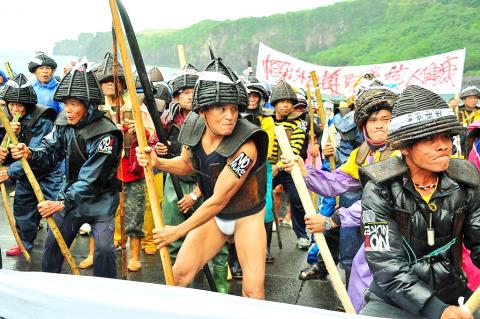
Photo: Chang Tsun-wei, Taipei Times
“This land has a soul, which has protected our tribe. Now, nuclear waste is poisoning it. If we don’t fight back, the damaged land will in turn hurt us because we did not fulfill our responsibility to protect it … Although we choose to protest peacefully, we wear full warrior costume to show our determination to keep fighting,” said protester Syaman Jyavitong.
According to an Orchid Island Biweekly (蘭嶼雙週刊) report, one elderly islander cried during the first protest. “If they keep saying it is so safe, why don’t we each take a barrel and keep it in our houses? Why do we need a storage facility?”
Indeed, when the facility was first built, state-run Taipower Power Co (Taipower, 台電) and government officials repeatedly assured the islanders that the waste was harmless. Orchid Island writer Syaman Rapongan recalls that he was told that “it was safer than hugging two gas barrels while sleeping.”
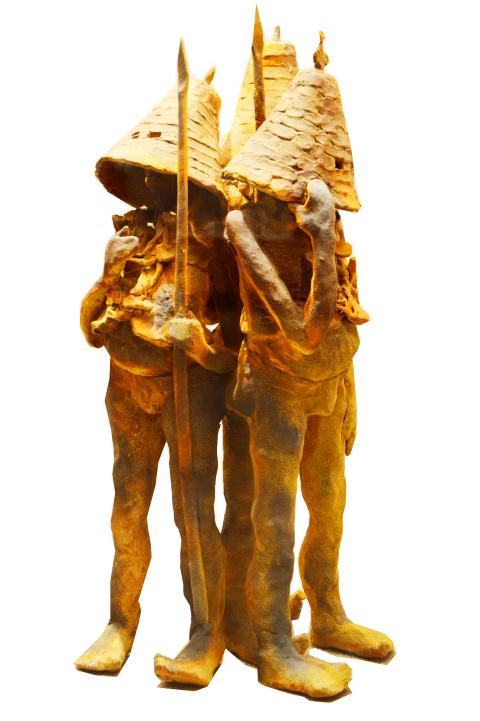
Photo: Chang Jui-chen, Taipei Times
The Atomic Energy Council launched several “educational” initiatives and set up a nuclear energy exhibition in Taitung to further convince the islanders, but they did not appear swayed.
In response to his people’s plight, Syaman Rapongan penned this poem: “Wild savages, your breakfast is served. Cobalt-60 for the men, cesium-137 for the women. As for the children, their breakfast is extinction.”
KEPT IN THE DARK
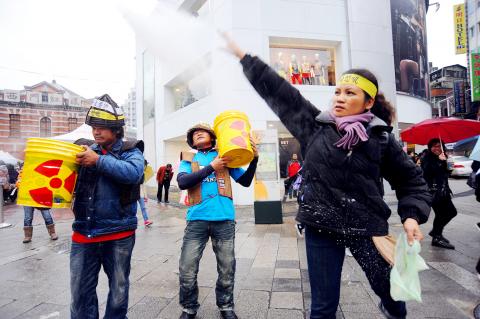
Photo: Lo Pei-Der, Taipei Times
How did the facility come about? In August 1971, the Atomic Energy Council met with Taipower and other institutions to discuss what to do with the waste produced at what would be Taiwan’s first nuclear power plant, approved by the government the previous year.
According to a study, The Mobilization of Orchid Island’s Anti-nuclear Movement (蘭嶼反核廢場運動的動員過程分析), by Wang Chun-hsiu (王俊秀), the best option was to dump it in the ocean — but given Taiwan’s declining international standing, they did not want to upset their neighbors. The next best option was to store it on an island.
The committee looked at 14 candidates — some were too small, some didn’t have harbors, some were too developed and some too close to the mainland — finally deciding on Orchid Island.
“The committee considered safety and economic factors, but not public opinion,” Wang writes. “They never informed the Tao people of their plan, and only started communicating with locals under public pressure.”
The committee did consider eventually dumping the waste into the ocean, but that plan was made invalid with the 1975 enforcement of the London Convention on the Prevention of Marine Pollution by Dumping of Wastes and Other Matter.
Wang writes that the Tao people were kept in the dark for almost a decade, finally finding out through media reports in 1982. Wu Jui-lan (吳瑞蘭) writes in A Study of Public Participation in Policymaking (政策的制定與民眾參與之研究) that when construction started, nobody was clear on what was being built — some said a fish cannery, others a military port — but none would have guessed a nuclear waste facility.
RESISTANCE
The first 10,008 barrels of waste arrived on Orchid Island in 1982. The first time the Tao people publicly expressed their displeasure was in 1987, when a group of young men tried to stop the Atomic Energy Council from giving a tour of the facility.
The official resistance began on Feb. 20, 1988 when 200 islanders staged the first “Chasing Away Evil Spirits” protest, and two months later the Orchid Island Youth Friendship Association (蘭嶼青年聯誼會) sent 100 members to support the anti-nuclear protests in front of the Taipower Building in Taipei.
Wang writes that since most Tao people did not understand what nuclear waste was, the young protesters dubbed the facility an anito, or evil spirit, to show other islanders the graveness of the situation.
“When they hold ceremonies to get rid of evil spirits, they must channel their greatest anger,” he writes. “The goal was to show how truly terrifying the facility was.”
In 1996, angry islanders successfully stopped a ship carrying 168 barrels from docking. No more ships would come after that, but almost 100,000 barrels remain on the island.
Protests continued and the issue heated up again when Taipower’s contract for the land expired on Dec. 31, 2011, leading to another Feb. 20 protest in 2012.
Today, the waste is still on the island, and the issue is slowly making headway. Just last week, the Ministry of Economic Affairs announced that it hopes to finalize its decision on a new site this year. Meanwhile, the Tao people continue to wait.
Taiwan in Time, a column about Taiwan’s history that is published every Sunday, spotlights important or interesting events around the nation that have anniversaries this week.

In recent weeks the Trump Administration has been demanding that Taiwan transfer half of its chip manufacturing to the US. In an interview with NewsNation, US Secretary of Commerce Howard Lutnick said that the US would need 50 percent of domestic chip production to protect Taiwan. He stated, discussing Taiwan’s chip production: “My argument to them was, well, if you have 95 percent, how am I gonna get it to protect you? You’re going to put it on a plane? You’re going to put it on a boat?” The stench of the Trump Administration’s mafia-style notions of “protection” was strong
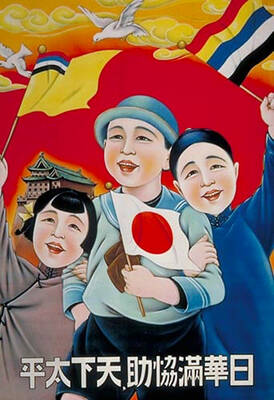
Oct. 6 to Oct. 12 The lavish 1935 Taiwan Expo drew dignitaries from across the globe, but one of them wasn’t a foreigner — he was a Taiwanese making a triumphant homecoming. After decades in China, Hsieh Chieh-shih (謝介石) rose to prominence in 1932 as the foreign minister for the newly-formed Japanese puppet state of Manchukuo in today’s Northeast China. As ambassador to Japan, he was to represent the last Qing emperor Puyi (溥儀) at the event’s Manchuria Pavillion, and Taiwan’s governor-general welcomed him with the honors of a state guest. Hsieh also had personal matters to attend to — most
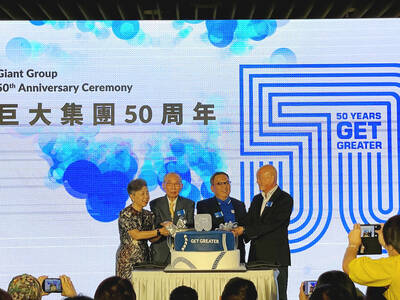
Late last month US authorities used allegations of forced labor at bicycle manufacturer Giant Group (巨大集團) to block imports from the firm. CNN reported: “Giant, the world’s largest bike manufacturer, on Thursday warned of delays to shipments to the United States after American customs officials announced a surprise ban on imports over unspecified forced labor accusations.” The order to stop shipments, from the US Customs and Border Protection (CBP), came as a surprise to Giant, company officials said. Giant spokesman Ken Li (李書耕) said that the CPB never visited the company’s factories to conduct on-site investigations, nor to interview or

The Korea Times announced the results of K-universities Global Excellence Rankings 2026, the nation’s first comprehensive assessment of global performance across its universities. The evaluation was launched to provide an objective analysis of the globalization status of Korean universities and to offer practical guidance for international students choosing institutions in South Korea. KOREA UNIVERSITY RANKS FIRST In the overall rankings, Korea University secured first place with a total score of 144.86, followed by Seoul National University (141.48) and Yonsei University (140.33). Rounding out the Top 10 were Sungkyunkwan University (132.20), Hanyang University (124.83), Sogang University (112.27), University of Seoul (111.10), Ewha Womans